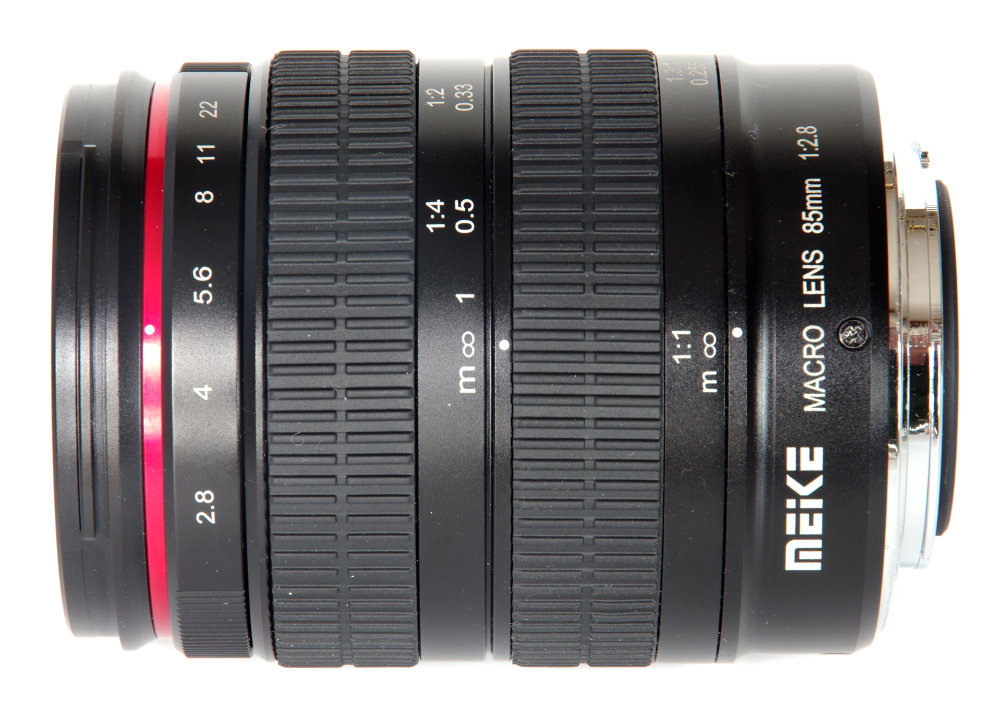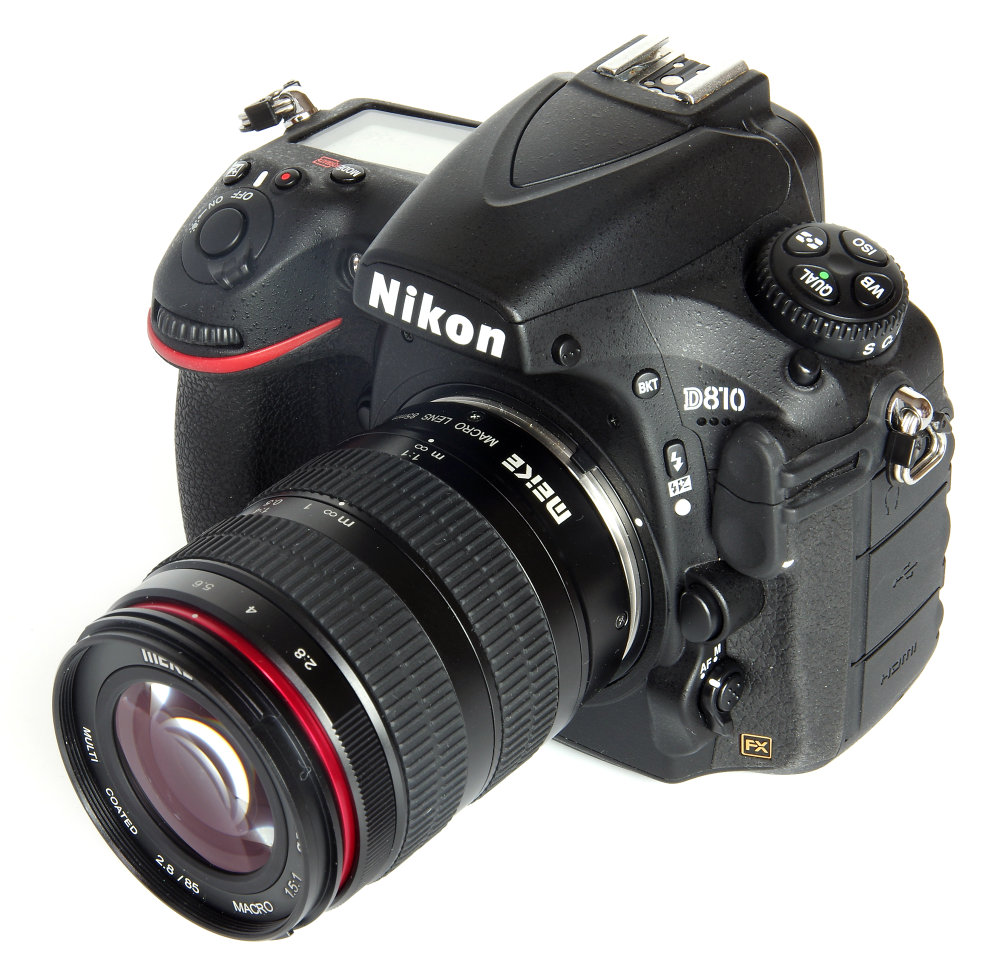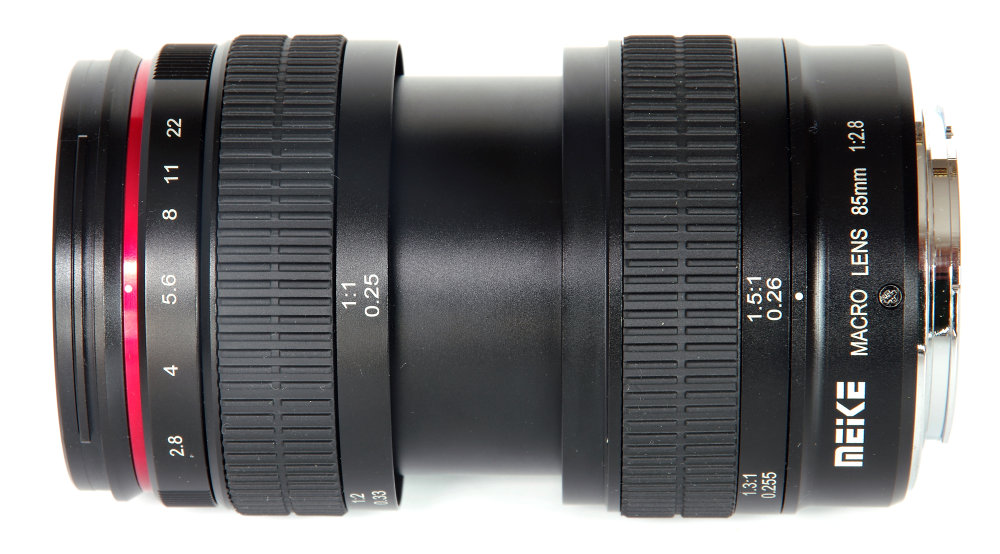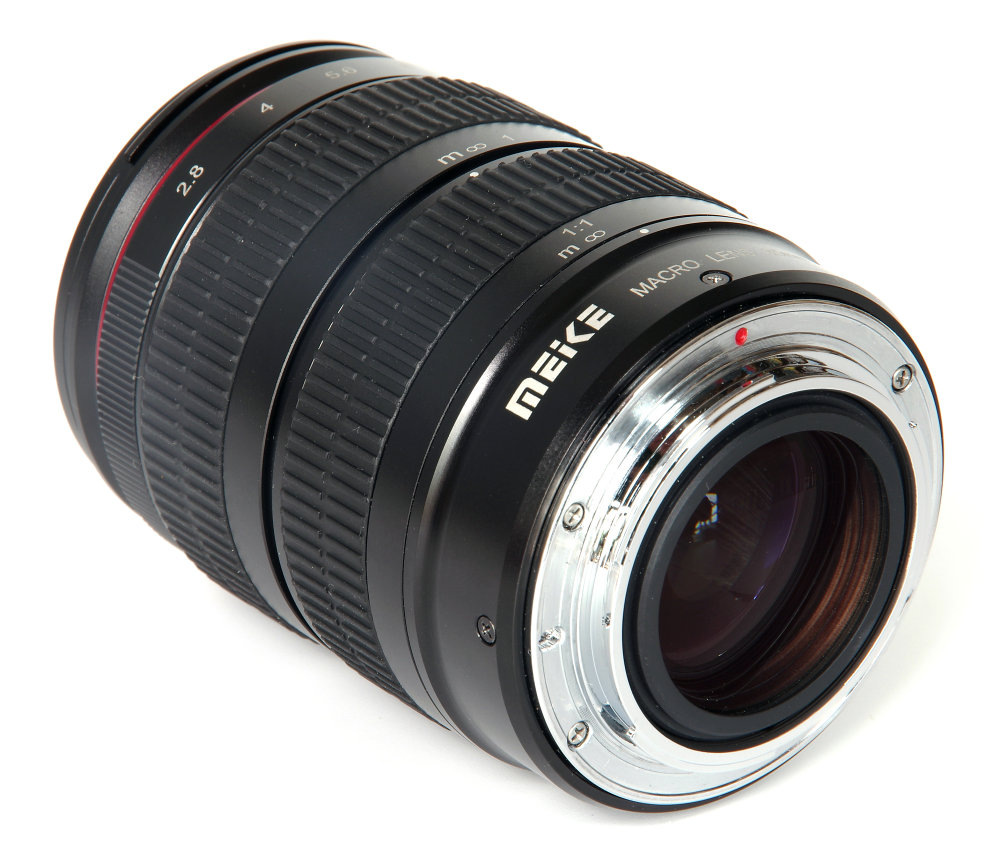Meike 85mm f/2.8 Macro Review
Meike 85mm f/2.8 Macro Handling and Features
This is a full frame lens, available in Nikon and Canon mounts. Balance on the Nikon D810 used for this review is slightly front heavy but in terms of size and handling the lens fits very well. It is manual focus only. 85mm is a fairly unusual focal length for a macro lens, most short telephoto macros are 90mm or 100mm, but it is the classic portrait lens, so there may well be potential there as well. It is substantially made using metal and weighs in at a solid 500g despite its fairly compact size.
Starting at the front of the lens, we have a very well engineered bayonet fit lens hood with locking catch. This surrounds a 55mm filter thread. Looking through the front element, we see the 12 bladed diaphragm, manually set by the ring just behind. This produces a very effective round aperture, which bodes well for the quality of the bokeh. The lens is multi-coated, using nanotechnology.

Meike 85mm f/2.8 Macro - At Infinity
There are two focus rings. The first, closest to the front, use internal focusing and operates down to 0.25m, giving a magnification of 1:1. That is, an object 1cm long will be recorded 1cm long on the sensor. When set to the closest setting, the second ring can be used to continue down to a magnification of 1.5:1, meaning a 1cm long object will now be recorded as 1.5cm long on the sensor. This is a significant difference and a fairly unique feature.
The first focusing ring concentrates its function very firmly on the closer distances. The amount of rotation between infinity and 1m is very, very small, meaning that hitting the exact point of focus for more distant subjects is quite tricky. As we move closer, the amount of rotation needed dramatically increases, so closer focus is very precise. Arguably this is a good thing for a macro lens. As well as distances, magnification ratios are also marked, which adds to the functionality as a macro lens.
The second focusing ring has an equally long travel to focus, and at distances offering between 1.5:1 and 1:1 magnification this is very critical. This means a solid tripod and use of the self-timer to avoid any camera shake are vital, as well as a patient approach to finding the point of focus. Being a short telephoto, finding the focus is made easier, but it is still essential for it to be spot on for best results. This second ring does alter the length of the lens, so it may be necessary to move the lens backwards a little when working at the highest magnifications. Effectively this acts like a zoom at this point, as we approach 1.5x magnification so we need to back the lens off to 0.26m. For small items, focusing can sometimes be easier by moving the camera or the subject rather than by operating the ring. Traditionally, a tripod mounted focus rail would be employed to move the camera smoothly and precisely for just this purpose.
Lens construction is 11 elements in 8 groups, suggesting that optical corrections have been made without recourse to aspheric elements or exotic glasses. This should still be capable of producing excellent results.
Handling of the lens is trouble-free. It is well made, all the controls operate smoothly and the focusing snaps in and out with good clarity. It is clearly designed from the outset as a macro lens, all the features enable that, rather than a standard short telephoto that focuses closer. Hence the emphasis on the accuracy of close focusing rather than the longer distances over 1m. Of course, its usefulness is extended in that it can also be used as a short telephoto for portraits and landscapes when required.
Add your message
Please login here or if you've not registered, you can register here. Registering is safe, quick and free.
photodo Stats
428 MTF tests
74 in-depth photodo reviews
100+ users join each day
Help the lens community by reviewing or rating a lens today via our lens search
Latest Lens Reviews
- Chinon 28mm f/2.8 Vintage Lens Review
- Canon EF 70-200mm f/4L IS II USM Lens Review
- Samyang AF 85mm f/1.4 EF Review
- Sigma 70mm f/2.8 DG Macro Art Review
- Samyang AF 24mm f/2.8 FE Review
- Meike 50mm f/1.7 Review
- Tamron 70-210mm f/4 Di VC USD Review
- Lensbaby Burnside 35mm f/2.8 Review
- Asahi Super Takumar 50mm f/1.4 Review
- Asahi Super-Multi-Coated Takumar 135mm f/3.5 Review



